|
Preservation Alliance of West Virginia (PAWV), the statewide nonprofit dedicated to historic preservation, is seeking a full-time (estimated approximately 40 hours per week) Program Associate to help with implementation and administration of the Preserve WV AmeriCorps program, and to assist with other PAWV activities and projects. Salary is negotiable for successful candidate, but is likely to be in the $25,000 to $28,000 range.
Position will begin full-time in late August 2016, and if possible, the successful candidate will attend an AmeriCorps training in Charleston July 7-8 with the program director. This position has a three-year expectation, hopefully renewable long term. Qualifications: Successful candidate MUST be organized and meticulous with paperwork, a self-starter, and computer literate with comfort in Word, Excel, email, and social media. Candidate should have training (college degree expected, advanced degree preferred) and background in one or more of the Preserve WV AmeriCorps focus areas of public history, historic preservation, tourism, community development, cultural resource management, or public administration. Previous AmeriCorps experience and/or previous involvement with PAWV will be a plus. Successful candidate must work closely with a wide variety of people, including community members, site supervisors, representatives of partner organizations, AmeriCorps members, other staff, and organization Board members. Good written and verbal communication skills, positive attitude, professionalism, calm demeanor in response to stress or conflict, and comfort with speaking in groups will all be needed. Associate will work primarily out of the PAWV office in Elkins, WV located at the 421 Davis Avenue, but remote work from a home office is negotiable for the right candidate (this candidate will be required to report to the Elkins office on some occasions). Schedule may be flexible other than required meetings, activities, and deadlines. Moderate reimbursed travel will be required. Duties will include:Program associate will be directly supervised by, and report, to Danielle LaPresta (PAWV Executive Director). Associate will also work with Lynn Stasick (PAWV Field Services Representative), and with PAWV assigned AmeriCorps members, in a small team environment. Program Associate will assist Executive Director with duties for Preserve WV AmeriCorps program that include, but are not limited to:
Program Associate will be expected to assist the Executive Director with the following PAWV organizational activities:
To apply, please submit by email:
Applications will be accepted until Monday, June 20, 2016, or until a suitable candidate is selected. Hiring for this position is dependent upon organization receipt of requested funding. For more information or to submit application: Danielle LaPresta, Executive Director dlapresta@pawv.org 304-345-6005 By Crystal Wimer, Preserve WV AmeriCorps serving at Harrison County Historical Society
Recently, I read a new book on how to sustain historic house museums entitled Anarchist Guide to Historic House Museums. The authors, Frank Vagnone and Deborah Ryan, theorize that the key to sustainability lies in more community engagement and a more balanced approach when it comes to preserving its collection and improving visitor experiences. Historic house museums are not just storehouses for artifacts, but should be interpreted as places for community engagement and dialogue. Often, the Harrison County WV Historical Society struggles to get feedback regarding its programming and from its volunteers, and I was ready to experiment with new methods for better community engagement. As I was reading the Anarchist Guide, I unintentionally tested Vagnone and Ryan’s theories on community engagement with my volunteers. Then later, I deliberately used them on a recent tour of the Stealey-Goff-Vance House. I discovered there was better engagement with our historic house museum and the HCWVHS when I encouraged physical interactions with our artifacts. Unbeknownst to me at the time, my first “test subjects” were our volunteers. The artifact collection housed in the rear display room and dining room had to be packed in preparation for repairs to the foundation of the Vance House. I’ve had trouble retaining volunteers to work in the archives, so I believed that working with the collection in the house would produce a similar outcome. To my surprise as my volunteers worked with artifacts week after the week, the more they kept dropping hints about wanting to reorganize artifacts in other rooms of the house. The question I heard over and over for five weeks was “Well, once we’re done with this, what’s next?” Apparently, our volunteers formed a connection while handling the artifacts when they were packing them for storage. For them, the packing process was like uncovering rare treasures. Their fascination with our collection inspired them to want to assist more with reorganizing the collection and unpacking it when the preservation work is over. Since the packing finished, these new volunteers have been regulars at our open meetings and programs. Now, my volunteers may have been unknowing “guinea pigs,” but my Vance House tour with the Stealey family was a planned trial of the Anarchist Guide’s theories. Previous house tours were restricted to the main floor, and we typically didn’t allow visitors to sit on the furniture or handle the artifacts. The Anarchist Guide; however, advocates letting visitors handle stable artifacts and giving them access to areas previously off-limits. So, this is exactly what I did with the Stealey family on their tour. The Stealeys were permitted to visit all locations in the house including the basement, attic, and artifact storage areas. Visitors rarely get to see the house’s original electric switch because it’s in the attic’s gable, but they did on this tour. If one of the children wanted to see an artifact up close, I brought it down and once I determined it was stable for them to handle, I let them. They also excitedly took advantage of the open invitation to take as many photographs as they wanted. During the tour, the Stealeys still learned about the history of the Vance House, but this Anarchist-style tour was so much more personal because they had the freedom to explore every aspect of the house. I knew the tour was a success just based on the high level of enthusiasm from the family at the time. But, it wasn’t until I received an email from Mr. Stealey the following week that I officially knew these Anarchisttechniques should be something the HCWVHS does for future tours. Mr. Stealey wrote: “Thanks so much for taking time to show us the house. We really enjoyed the informative tour. You did a great job with a lot of information/history to tell/show us. My kids keep saying that they could not believe that you let them look at and pick up stuff.” Again because they were allowed to connect to the artifacts and the house, they were actively engaged with history, and they had a unique experience at the Vance House that they will remember years later. So through my experiences, it seems Vagnone and Ryan’s theory on better community engagement through making connections with artifacts works. Through their engagement with our artifacts, the newer volunteers are eager to start new projects at the Vance House, and the Stealey family had a unique experience that they won’t forget because most museums don’t allow visitors handle the artifacts. So, I encourage West Virginia’s historic house museums to give their visitors access to their artifacts. Because who knows? Those visitors could turn into new volunteers, members, or possible donors, and I don’t know of any historic house museum that wouldn’t want more people caring about history. This position is made possible through an AmeriCorps State and National Grant provided by the Corporation for National and Community Service and Volunteer WV. The State, Tribal, Local Plans & Grants Division recently announced FY16 Underrepresented Community Grant applications are now available on Grants.gov. (Funding Opportunity Announcement #P16AS00184)
Deadline: 11:59 EST on July 15, 2016 Eligible applicants: THPOs, Tribes, SHPOs, County/City Governments, & Certified Local Governments [may partner with others including nonprofits, National Heritage Areas] Eligible Projects: survey, inventory, and designation of historic properties that are associated with communities currently underrepresented in the National Register of Historic Places and among National Historic Landmarks Project budgets: $15,000 minimum, $50,000 maximum, no match is required. Questions? preservation_grants_info@nps.gov or (202) 354-2020 Within one year of the completion of the grant, all projects must result in:
For more information: Underrepresented Community Grants (https://www.nps.gov/preservation-grants/community-grants.html). By Ian Gray, Preserve WV AmeriCorps serving at the Old Hemlock Foundation Most days when I head into the “office,” the first thing to do is reach down and greet the black and white ball of energy that runs to the front door. While serving with a pair of dogs is a soothing experience and an incredible perk, it also stands as a metaphor of the unique legacy and nature that makes Old Hemlock (http://www.oldhemlock.org/) so special. Many places claim it, but we at Old Hemlock can truly say that our history is alive. Enthralled by the Allegany Mountains, grouse hunting, and English setters from a young age, George Evans knew the type of life he wanted to lead and lived it well. Finding success as a graphic artist in New York, George was able to secure the funds to acquire the country home he dubbed Old Hemlock and demonstrate enough talent to convince his art director at Cosmopolitan that working from the beauty of the West Virginia mountains was in everyone’s best interest. After the interruption of WWII, George quickly wrapped up his professional illustration career and turned his full attention to the things he loved the most, his wife Kay, grouse and woodcock hunting, writing, and breeding the line of gun dogs that have become a living legacy. Every March, that living history gathers in the rolling hills of southwestern Pennsylvania in the form of a small herd of beautiful dogs and their doting owners. For three days, the Hunting Hills Shooting Preserve is filled with the sounds of joyous conversation, the sharp crack of gunshots, and collective barking from dozens of Old Hemlock setters eager to hit the field and find the waiting birds. Having never even held a gun, much less embarked on a hunting trip, being able to simply follow the dogs and owners into the field was an eye-opening experience. I had read the literature and had a basic grasp of the history associated with Old Hemlock, but the three-day immersion made everything come together. The bond between gunner and dog, the beauty of the slender setter on point, the exhilaration of a productive shot and subsequent retrieve, and so many other things described so eloquently in the pages of George’s writings were now before me in living color. In each dog rested the legacy of the man and woman who so carefully bred the line and the equally carefully selected owners carried on George’s view of hunting and respect for the game. While we are blessed at Old Hemlock with the natural beauty of nature around us and a literal house full of artifacts to tell the story of George and Kay, the real legacy and best storytelling tool will always remain the dogs and owners who gather at the reunion. Luckily for myself, the first AmeriCorps member to serve here realized the same thing and left an incredible resource to build off of and add to. At every reunion, stories of times spent with George and Kay, their writings, their legacy, and, most numerous, the line of setters can be heard around the tables and out in the field. The history that the foundation was established to preserve rests in the hearts and minds of the close knit group of dog owners that form the Old Hemlock family, and in an external hard drive sitting in a box on a shelf back at the foundation. These precious stories, around twenty interviews, were copiously compiled and transcribed to provide the foundation with an Oral History archive of the anecdotes, thoughts, and feelings that were alive in the oral tradition but never written down or recorded. At the recent reunion, I got the chance to try my own hand at adding to the already rich archive.
Over the three days, three interviews were conducted capturing the perspectives of a new member to the Old Hemlock family and two individuals that experienced a common interest in dogs and gunning evolve into ownership of a setter placed by George and Kay and a treasured friendship. Having conducted oral history interviews before, I knew the stories shared by interviewees can be powerful, and it’s often surprising how much people are willing to share. However, I was still amazed and horned at what was spoken of in the interview process. First and foremost, talking to the interviewees brought the subject and history squarely into the present. The interviewees’ testimony made memories of George and Kay, the dogs, and past reunions seem if they had happened only yesterday. I was brought back to the moments shared by the interviewees that conjured warm feelings of fond embraces, and at one point a few tears of joy, and felt, in some small way, that I had gotten to meet the people behind the wonderfully written books I had been reading the past few months. Beyond the figurative aspect of the past existing in the present, each interview made clear the story of Old Hemlock has yet to end. As the new member to the Old Hemlock family aptly demonstrated, the writings of George and Kay, the line of setters, and the annual reunion continue to carry on their memory have ensured that legacy will not die anytime soon. Old Hemlock’s mission is to preserve and promote the legacy of George and Kay and it benefits immensely from that legacy being more than static objects and writings, it is a group of people and a line of dogs that continues to grow with every new litter or owner. With this archive of interviews laying at my fingertips, the natural next step was to get the content out of the archive and into the public sphere. The internet is a truly wonderful thing. A few clicks of the mouse can share virtually anything around the world in an instant. Having basic video editing skills in my tool belt, the possibilities inherent in the over twenty hours of raw video stuck out like a sore thumb. Each interview contained segments that eloquently and powerfully spoke to the many aspects of Old Hemlock’s history that were screaming to be shared and help the foundation’s mission. After taking inventory and some brainstorming, a plan emerged. Each interview would be dissected and the beset of the best content pulled out to form short (one to four minute) clips and then organized into groups (the impact of George’s writing for example) to be uploaded to the foundation’s YouTube page and shared with the online world. So far, the subsequent implementation has provided further valuable experience in video editing and gleaned a deeper appreciation for the past and present so enthusiastically shred by the interviewees. Each time I hear and see the voices and faces on the screen, faces that went from strangers to incredibly welcoming and good natured people over the reunion, the tales told become more and more like conversations shared in the relaxed atmosphere of the reunion rather than files on some hard drive. Each clip sheds new light on the muti-faceted story we celebrate here at Old Hemlock and puts it in words that seem to be inspired from the pen of George and Kay as they look down on what they would be proud to call their legacy. As George poignantly stated, “Some men tell of beauty, speak of grace. I tell of grouse dogs that enriched me beyond measure and made me glad.” [1] Thanks to that intimate love for the dogs and his tireless effort to perfect the line, the Old Hemlock Foundation has, itself, been enriched beyond measure in the dogs that still bear the breeders mark and the owners who carry on a living memory that shows no signs of fading. [1] George Bird Evans, An Affair with Grouse (Bruceton Mills: Old Hemlock, 1982), 110. This position is made possible through an AmeriCorps State and National Grant from the Corporation for National and Community Service and Volunteer WV.
On behalf of the Preservation Alliance of West Virginia (PAWV), the statewide nonprofit dedicated to historic preservation, I am writing in regards to the Beckley Newspaper Building located at 345 Prince Street, which is the subject of a possible demolition project using HUD federally-funded Community Development Block Grants (CBDG). The PAWV respectfully requests that this project be reconsidered and the funds be repurposed as they can be used for various purposes that contribute to the economic vitality of the district and the downtown, providing a great benefit to low- to moderate-income residents.
The purpose of the CDBG is to benefit low- to moderate-income citizens in your community. It is the understanding of the PAWV that the Beckley Newspaper Building is owned by a private citizen, and the citizen has neglected the building for years, in addition to not addressing broken windows and insecurity. This has led to the building’s consideration as being a slum and blight on the City of Beckley. It is also the understanding of PAWV that demolishing this building could be considered Clearance under the National Objective for Slum/Blight Removal. For the CDBG to be eligible in this case, the project is meant to “benefit all residents in a particular area, and at least 51% of those residents are low- to moderate-income persons (CDBG grant guidelines).” The PAWV humbly submits the following questions related to the implementation of these guidelines when selecting this project:
In addition to clearance, CDBGs can be used for rehabilitation and historic preservation of buildings. The PAWV has additional questions related to this project and how it could continue to contribute to the national register designation and the local historic preservation ordinance.
The Beckley Newspaper Building is a historic site in the nationally-significant Beckley Courthouse Square Historic District. This honorary designation creates funding opportunities for all the property owners in the district. These funding opportunities include historic preservation grants (up to 50% of expenditures) and a historic tax credit (up to 30% of expenditures for commercial properties). The structure at 345 Prince Street is directly connected to the property at 341 Prince Street by a fire escape. These two properties should be treated as one cultural resource, although the National Register listing for the Beckley Courthouse Square Historic District describes these two buildings as separate. It is important to recognize that the 66 year-old building at 345 Prince Street, which is where the Raleigh Register newspapers were printed, is directly associated with the Gorman, Sheatsley, and Hatchinson or Beckley Newspaper Office building next to it. Back then the newspaper probably built two separate buildings because of the noise from the printing presses and the greater fire risk in the newsprint building. According to the November 1956 Telephone Directory for Beckley, when the Raleigh Register newspaper was operating, both buildings shared the same address, 341 Prince Street. However, by the time the Beckley Courthouse Square Historic District was listed in 1994 the two buildings had different addresses and received separate evaluations. WWNR radio occupied the former Raleigh Register newsprint building with its current 345 Prince Street address while Gorman and Sheatsley Law firm occupied the former Beckley Newspaper building at 341 Prince Street. With this information in mind, these two properties are directly related and connected. The PAWV submits one final question:
The PAWV would like to thank the City of Beckley for the opportunity to submit the comments and questions related to the Beckley Newspaper Building project. We would also like to offer our services related to developing a historic preservation plan for the Beckley Newspaper Building and for any projects affecting the Beckley Courthouse Square National Historic District. The PAWV is sensitive to the challenges the City faces on a daily basis but respectfully suggests that the CDBG funds could be used in an alternative way that benefits low- to moderate-income citizens, as well as preserving the historic character of the district. Please contact me for any questions about the content of this letter.
The reason behind the exhibit’s creation was from a lack of information and display on the African-American community in the Shepherdstown museum. The idea of adding a new exhibit started with the donation of a baseball uniform from a local team, the Shepherdstown Red Sox. The Red Sox were a baseball team of local African-American townspeople from the 1930s up to 1970. They played ball on Sunday afternoons, and we learned that those same people, plus others, were also a part of a choir group, the Brothers of Harmony. This group would travel around to religious organizations and perform choir concerts, and this with everything else, created busy Sundays. The April 1st event was for Historic Shepherdstown Commission members and was for them to get together and see the museum before its reopening. The president of our commission stood in the new exhibit and greeted everyone who came up to see the exhibit. She talked to each of them telling about the exhibit, the history, and the background of the artifacts on display. Two people helped us with the mechanics of the construction of the exhibit, Rob McDonald and Angie Faulkner. Rob was instrumental in our ability to create the physical exhibit. Rob built a kiosk for a spinning information booth displaying three individuals who were interviewed for the exhibit. He also had a huge part in the development of the large display box we used for that exhibit. Angie put our ideas and thoughts into the world of graphic design and imagery. All of our graphics for that exhibit were designed and developed by Angie for use in the museum. The two of them together helped us to make a fantastic new exhibit that was up to par with professional exhibits. Saturday April 2, 2016 was the moment of truth for the new exhibit. On this day, the Historic Shepherdstown Commission and Museum had an open house for the public. This open house had some of the members from the Shepherdstown Red Sox and the Brothers of Harmony come. These members were the ones who made the exhibit go from a thought to an actuality, through interviews and donations of artifacts for the exhibit. These men and their families stuck around for the majority of the day, talking and catching up with one another. Later in the day a newspaper editor came up to the men and interviewed them about the exhibit and its opening. These men were extremely pleased with the outcome of the exhibit. They made this point when talking to the newspaper editor. The editor stayed for a while and then left with a story to tell. The exhibit open house, shortly after this, came to an end around 5 p.m. and the ball players and choir members were there the whole time. They are now publicly in the story of the oldest town in West Virginia.
To learn more about this exhibit and the Shepherdstown Red Sox, visit http://historicshepherdstown.com/portfolio-item/red-sox-uniform/. The exhibit can be viewed at the Entler Hotel located at 129 E. German Street in Shepherdstown, WV. The museum is regularly open Saturdays from 11:00 am to 5:00 pm and Sundays from 1:00 pm to 4:00 pm. Private tours are available upon appointment. Call 304-876-9010 for more information. This project was made possible through the Preserve WV AmeriCorps program – funded through a grant from the Corporation for National and Community Service and Volunteer WV.
Although Mayor Bill O’Brien has expressed his belief that the building should come down, he emphasizes that no decisions have been made. Demolition will take place using Community Development Block Grants made possible through HUD (federally-allocated) funds. These grants can also be used for rehabilitation and preservation projects, but their aim is to benefit low- to moderate-income people.
The West Virginia State Historic Preservation Office has said although the property is not archaeologically significant, it may be architecturally significant because it was constructed in the 1950s. It is within the boundaries of the Beckley Courthouse Square Historic District It may be eligible for the National Register of Historic Places, and demolition would be considered an “adverse effect” to a district already considered “endangered” by the Preservation Alliance in 2015. Delisting would prevent downtown property owners from applying for certain preservation grants and state and federal historic tax credits. Because the city plans to use HUD Community Development Block Grant (CDBG) funds to demolish the building, a public meeting must be held by law. Walter Hagland with Urban Design Ventures will be present at the meeting to answer questions. When The Register-Herald reached out to Hagland in March, he said rehabilitation of the building would not be economically feasible. However, he could not provide specific figures for rehabilitation or demolition. Jim Chambers, a downtown property owner, said he wants to see those numbers. “Why would the city want to spend money on someone else’s building?” Chambers questions. “As a property owner, you’re responsible for your own building.” He said property owners should be held responsible for their buildings, and that grant funds should not be used to tear down this property. Chambers also questions the plans for the property if the building is demolished — Will it remain an empty lot or will something be built in its place? Anyone interested in sharing opinions may do so at 4:30 p.m. Tuesday at council chambers at City Hall, 409 S. Kanawha St. in Beckley. Written comments may be mailed to Angela King, grants administrator for the City of Beckley, at 409 S. Kanawha St., Beckley, WV 25801. Some content reproduced from the Register Herald at http://www.register-herald.com/news/public-encouraged-to-share-comments-on-potential-demolition-of-downtown/article_b4520c52-b801-58bf-a8a8-5d858cd73668.html Much of this content can be credited to Wendy Holdren, Register Herald reporter.
Today, the Whipple Company Store houses the Appalachian Heritage Museum where you can visit and experience the history and cultural heritage of West Virginia coal mining families. Tours are held throughout the summer that offer a great opportunity to learn about our West Virginia heritage, coal mining experience, Appalachian culture with a hands on approach.
The Whipple company Store has many exciting events planned so mark your calendar now! Saturday, May 21st – the Whipple Company Store will be recognizing their 10 year reunion as a museum. This special event will feature the New River Youth Symphony and a tour of the beautiful building from 3-6 pm. Complimentary refreshments will be provided. Sunday, May 22nd – A benefit concert featuring both classical and Appalachian music will be held from 3-5 pm. Any and all donations will be accepted. Proceeds will benefit continuing music education for Charlotte Lynn’s trip to Green Mountain Music Camp in Vermont. Saturday, May 28th – Car show from 9 am – 3pm. For more information about the car show: http://whipplecompanystore.com/2016carshow.html Friday, June 10th – The Genealogy and Study Room dedication will be held in honor of Shirley Love from 3-6 pm, featuring a performance by Ann Sumpter Arrington and Charlotte Lynn on violin. Refreshments and museum tour will be provided. Wednesday, June 15th – Musical performance by Tom Breiding, starting at 5:30 pm. October, 1st and 2nd from 11 to 6 pm – Whipple Train days featuring train displays of many model trains and set ups. The entire building will be dedicated to trains of the past. For more information about the Whipple Company Store visit: http://www.whipplecompanystore.com For more information about the events: http://whipplecompanystore.com/events2016.html Or call: 304 465-0331 7485 Okey L. Patteson Road Scarbro, West Virginia 25917 The Preservation Alliance of West Virginia announced on May 6, 2016, during a press conference at Charleston’s Staats Hospital Building, the addition of four resources to its list of over 40 endangered historical properties across the state. Thank you to Gaddy Engineering for sponsoring this special event. A 1921 African-American church in the former coal camp of Tams, a 1939 school in the New Deal community of Dailey, a 1928 bridge in Hinton, and a c. 1880-1900 city block in downtown Wheeling have all been designated as endangered by the alliance. New Salem Baptist Church is the only building that remains in the coal camp in Tams (Raleigh County). The Gothic Revival church was built in 1921 for black miners and their families. The church reached its peak during the 1930s, serving 350 members. After the mine sold in 1955, the community began to empty. Outside coal companies bought and moved many of the buildings. The last residents left in the 1980s. The church has always had an active congregation (currently around 10 members). Maintenance is the chief issue, as is keeping the property as a church for the long-term. The deed’s reversion clause apparently states that the parcel will revert to ownership by the present Western Pocahontas Land Company should it cease to be a house of worship. The congregation and all other engaged parties agree the church should be preserved perpetually as a monument to the communities that once populated the Winding Gulf and as a memorial to the former black community of which the church is the sole remnant.
Homestead School is an elementary school serving the Tygart Valley Homestead communities of Dailey, East Dailey, and Valley Bend (Randolph County). The 1939, Art Moderne style school was an important part of resettlement plans to relieve desperate families in rural West Virginia during the Great Depression. The Tygart Valley Homestead was part of the Roosevelt Administration’s First Hundred Days legislation and was the state’s third (and largest) successful resettlement program. Homestead School, which featured First Lady Eleanor Roosevelt as its first graduation speaker, is the last operational school of the 99 built during the era. Homestead School is in danger of closure due to lack of funding to maintain and rehabilitate the school. The Randolph County Board of Education (RCBE) was recently unable to pass a bond levy, which would have helped to pay maintenance costs at this school and others. A Friends group, the Homestead Association, helps counter these costs by fundraising and applying for grants to rehabilitate the school. The goal of the Homestead Association is to raise funds to keep the school functioning and to preserve the memory of the Homestead communities in the Tygart Valley. Avis Overhead Bridge connects Hinton and the neighboring community of Avis (Summers County). It is recognized in the 1984 West Virginia Bridge Survey as being historically significant. The Luten Bridge Company constructed the bridge in 1928. Its designer, Daniel B. Luten, claimed to have designed over 17,000 bridges, and the concrete Avis Overhead Bridge features his patented Rainbow Arch – built with curved, simply ornamented, solid parapets. The Avis bridge closed in 2003 when a new bridge was constructed nearby. The West Virginia Division of Highways (DOH) retains ownership and does not have plans to rehabilitate the bridge, which in need of concrete repairs, conduit replacement for decorative lighting, and grooming of the surrounding area. Local groups would like to see it reused as a pedestrian bridge. The DOH would consider giving up ownership of the bridge to a nonprofit, if that particular organization could demonstrate the long-term fiscal ability to inspect the bridge in accordance with National Bridge Inspection Standards and to maintain its safe operations for general public use. Wheeling’s 1400 Block of Market Street consists of three contiguous buildings (1425, 1429, and 1433) on the west side of Market Street in the Wheeling Historic District (Ohio County). All three (c. 1880-1900) have housed prominent, locally-owned and operated businesses – including Standard Cigar Works, Wheeling Candy Kitchen, and, most famously, Zellers Steak (in the middle of the three buildings, number 1429). Zellers was owned by Wheeling’s most notorious underworld figure, “Big Bill” Lias – with the first floor being a legitimate restaurant, while a plush gambling casino operated on the second floor. In addition to being a part of Wheeling’s fascinating past, the buildings are architecturally interesting. Number 1425 is Italianate, 1429 is Flemish with Medieval overtones, and 1433 is Victorian/Neoclassical. Facades of the upper floors of each building are essentially original, while the first floors have “contemporary” storefronts. Renovation of these first floors would enhance the architectural value of the entire block. The City of Wheeling acquired the buildings in 2014 and is willing to sell them to the right buyer, with a negotiable price. Anyone interested in buying any of the three buildings should contact the City of Wheeling’s Planning Department at 304-234-3701 and ask for the Request for Proposals detailing the requirements. “The Endangered Properties program allows Preservation Alliance to go into communities and assist their efforts to preserve and/or restore places that are important to them,” said Martha Ballman, former PAWV Executive Director, now serving on the Board of Directors. “It is a public statement that these places matter, not only to them but to us all by our shared heritage. Real progress has been made and many sites saved through these efforts. Our [Charleston] community has watched the Staats Hospital [a 2005 and 2012 WV Endangered Property] languish for many years, succumbing to vandals, time and the elements; PAWV recognition and local efforts are now making preservation of this historic building and its stories [a reality].” Disclosed annually since 2009, the list has become one of the organization’s most useful tools and has allowed it to build interest in the rescue of threatened landmarks and landscapes. After being nominated by individuals and organizations, properties which have been added to the alliance’s list are selected through a competitive application process based on imminent danger, on local support for their reuse, and on their listing on (or official eligibility for) the National Register of Historic Places. Properties that make the list qualify for assistance through the alliance. The organization’s Field Services Representative, Lynn Stasick, works with local residents rallying to save and repurpose these endangered sites – providing advocacy, capacity building, and preservation assistance such as structural needs assessments. Current Endangered Properties in West Virginia may be found on the Preservation Alliance’s website at http://www.pawv.org/endanger.htm. Citizens who are interested in assisting with preservation projects may contact the alliance at info@pawv.org or 304-345-6005. Visit www.pawv.org for preservation updates, for more information about each of the Endangered Properties, or to download a nomination form for next year’s Endangered Properties list. |
News and NotesCategories
All
Archives
January 2024
Subscribe to our mailing list to receive e-news updates on historic preservation news and events in West Virginia.
|
Get Involved |
Programs |
Contact UsPreservation Alliance of West Virginia
421 Davis Avenue, #4 | Elkins, WV 26241 Email: info@pawv.org Phone: 304-345-6005 |
Organizational Partners:
© COPYRIGHT 2022 - PRESERVATION ALLIANCE OF WEST VIRGINIA. ALL RIGHTS RESERVED.

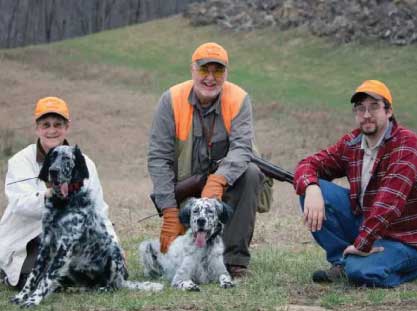

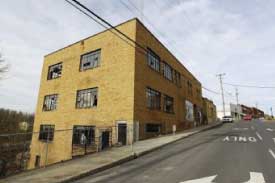
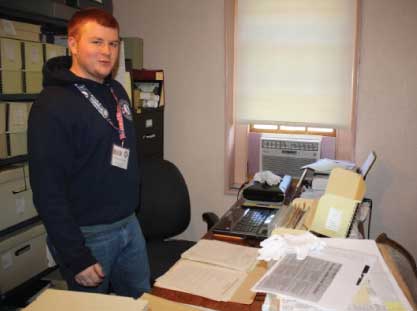
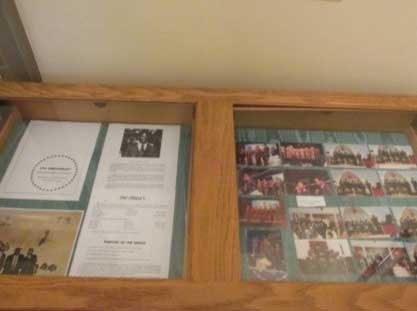
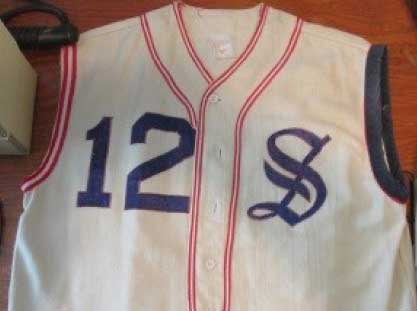
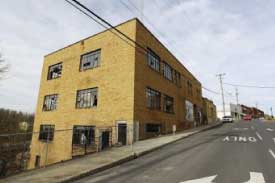
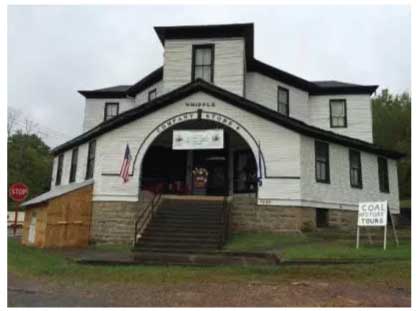
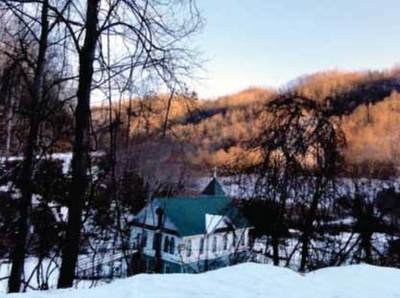
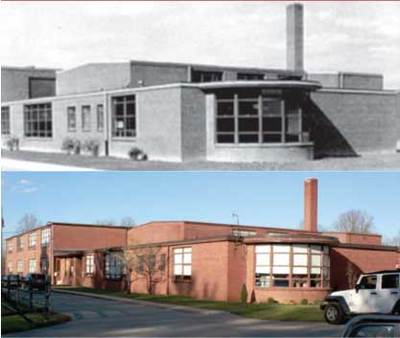

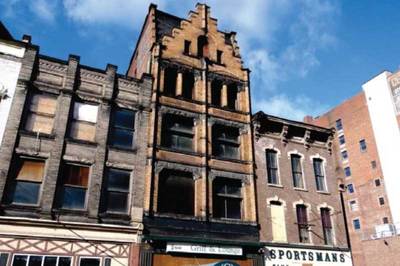
 RSS Feed
RSS Feed



